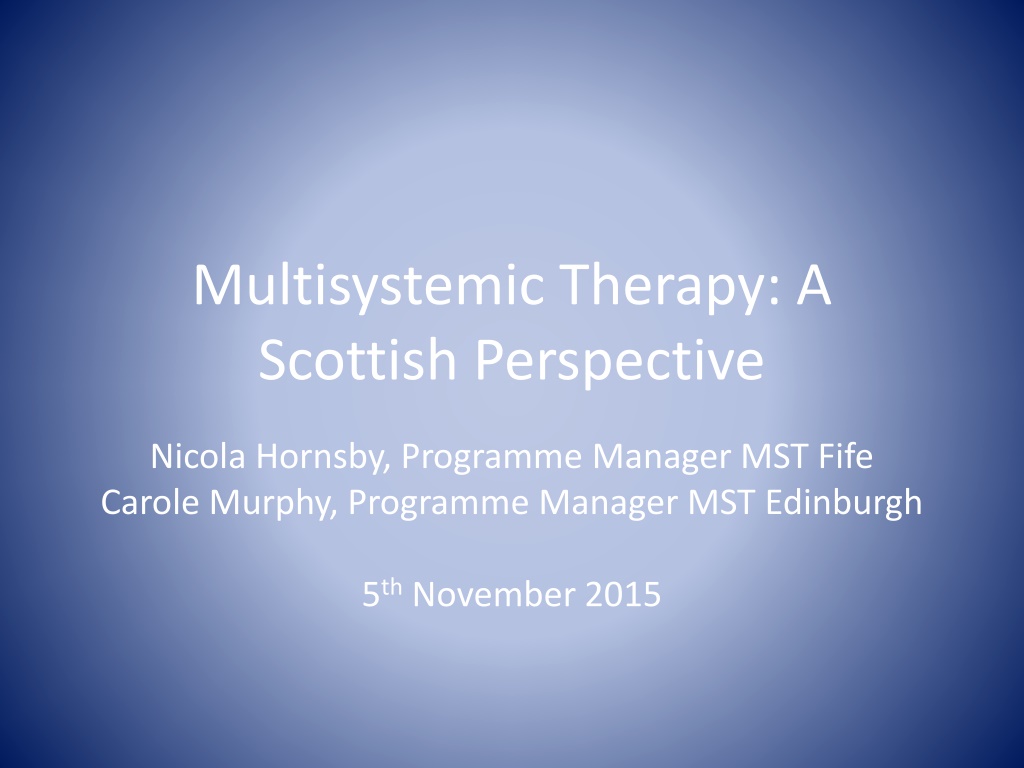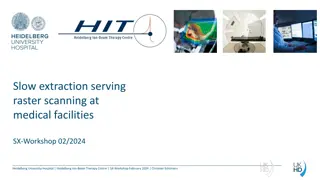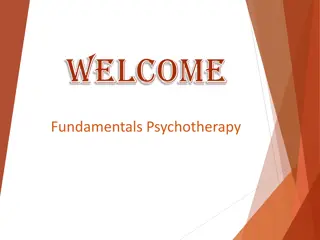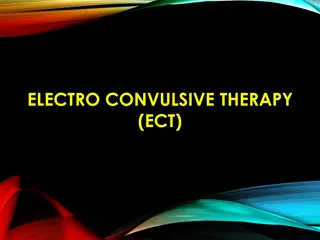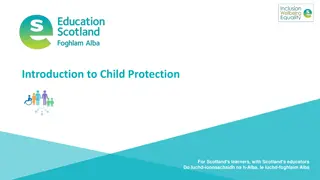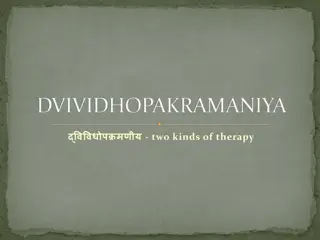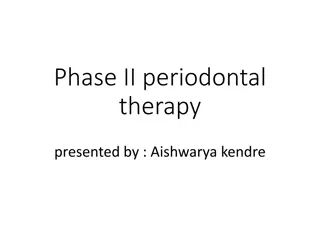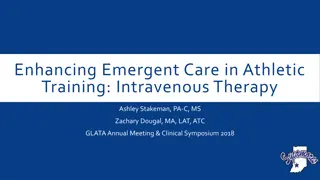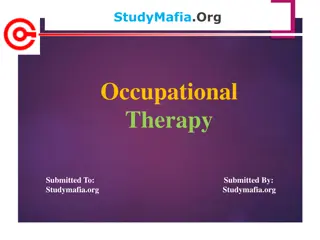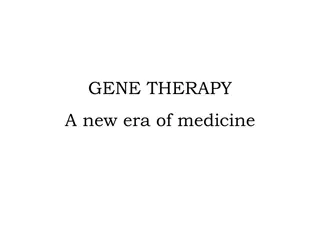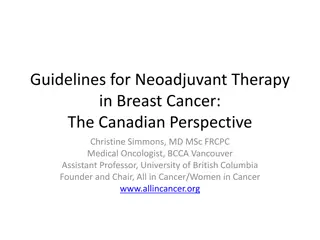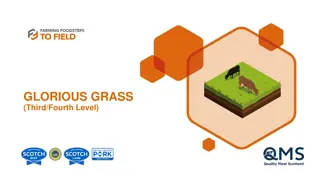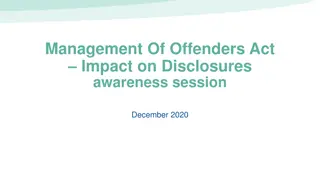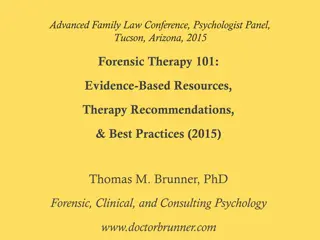Overview of Multisystemic Therapy in Scotland
Multisystemic Therapy (MST) is a community-based intervention focusing on addressing antisocial behavior in youths aged 12-17, targeting risk factors across various systems and enhancing protective factors. It involves evidence-based interventions like behavior therapy and cognitive behavioral therapy, emphasizing goal-oriented and problem-focused approaches. The short-term yet intensive program includes 24/7 on-call service, group supervision, and continuous quality improvement. MST was chosen for its effectiveness, unique aspects, and cost-effectiveness supported by research evidence.
Download Presentation

Please find below an Image/Link to download the presentation.
The content on the website is provided AS IS for your information and personal use only. It may not be sold, licensed, or shared on other websites without obtaining consent from the author. Download presentation by click this link. If you encounter any issues during the download, it is possible that the publisher has removed the file from their server.
E N D
Presentation Transcript
Multisystemic Therapy: A Scottish Perspective Nicola Hornsby, Programme Manager MST Fife Carole Murphy, Programme Manager MST Edinburgh 5thNovember 2015
What is Multisystemic Therapy? Community based, family driven intervention to address antisocial and offending behaviour in 12- 17 year olds Addresses risk factors across multiple systems and builds protective factors Interventions are goal-orientated, problem- focused, and evidence-based e.g. behaviour therapy, cognitive behavioural therapy, pragmatic family therapies or parent management training
What is Multisystemic Therapy? Short-term (3-5 months) but intensive intervention 24/7 on-call service Weekly group supervision and consultation Continuous quality improvement - individual, team and service level
Why we chose Multisystemic Therapy? MST offered aspects not already offered by existing local services Meets key service priorities of reducing out of home placements Successful implementation and outcomes elsewhere in UK High levels of technical assistance for implementation Robust evidence base Cost effectiveness data
MST Research Evidence 1. RCT s by programme developers in US e.g. Borduin (1999) - some criticisms Littell et al (2005) Long term RCT follow up e.g. Sawyer & Borduin, 2011, 22 yrs post MST 75% fewer violent arrests Independent RCT s in the US e.g. Timmons-Mitchell et al 2006 Independent RCT s in Europe (e.g. Norway - Ogden & Hagen, 2006, Ogden and Halliday-Boykins (2004) UK RCT (Butler, Baruch, Hickey, & Fonagy, 2011) Compared MST directly with the use of Youth Offending Service statutory interventions. In the last 6 months of the study only 8% in the MST group against 34% in the YOS group had one or more further non- violent convictions 2. 3. 4. 5.
Independent support for the utility of MST Blueprints EBP database rating of Model Plus Recognised by United Nations Office on Drugs and Crime (2010) Multimodal interventions, for example MST, are recommended in NICE guidelines for antisocial behaviour and conduct disorder (2013)
Cost effectiveness: UK studies Every pound spent on MST produces a return of 1.77 (Social Research Unit) Costing report on implementation of NICE guidance indicates MST to be cost effective in the UK.
MST Scotland Year MST started: 2009 (2 teams), 2011 (1 further team), 2013 (2 further teams added) Fife, Glasgow and Edinburgh outcomes combined (5 teams): 604 families (cases closed to date) 87% completed the intervention 89% youth at home 75% youth in school/working 65% youth no further charges
Using MST as Part of a Multiagency Approach to Reduce Risk of CSE Young people do not always perceive themselves as exploited Working systemically is a powerful way to address multiple risk factors quickly Needs a dual approach alongside investigation and information sharing to pursue perpetrators prosecution If families are provided with adequate support to reduce family conflict, improve relationships and monitoring and supervision and increase involvement in school/decrease association with antisocial peers then risk of CSE is reduced
Typical Pattern of Referral Behaviours for 12- 14 Year Olds Going missing: police reports for missing episodes Verbal aggression at home: can occur daily. Abusive towards parents when questioned about coming home late and going to school. Breakdown in parent/child relationship has resulted in parents demanding that child be taken into care Alcohol use: hospital admissions x 2 as a result of alcohol use Posting naked images online: reports has experienced cyberbullying from school peers as a result Coming Home Late: every night. Associating with an older peer group in local park Non School Attendance: frequent truancy including period truancy
Top Clinical Concern: Going Missing Pull and push factors wants to make friends School Holidays Antisocial influence contact her by text/online to encourage her out Young person anxious about attending school: absconds to avoid school It s exciting to stay out Going Missing No incentive to come home on time ( more rewarding to be out) Hanging around with unknown peers on local park who have late/no curfews has money every day to go out from Mum Mum does not know what to do to get her home. Mum has given up. Easier at home when child not in house less conflict contacts her Mum, while missing, thus Mum does not reporting her missing or take other action No clear curfew : Mum negotiating with child about when she can stay out until
Example Interventions INTERVENTION DRIVER 1.Mum does not know what to do to get young person home Safety plan: included supervision and monitoring steps, 4W s, check in s. Identify additional family/friends support for Mum. 2.Hanging around with unknown peers on local park who have late/no curfews Peer work: obtaining contact details, encouraging pro-social relationships, getting to know peer group and parents, target safe houses, 3. Antisocial influences contact girl online to tempt her out Educate Mum re supervision and monitoring on line. Restrict access and clear rules use. Submit IRD. Liaison with CPT and PPU 4. No incentive to come home on time (more rewarding to be out) Increasing pull factors back home. Teach Mum communication & de-escalation skills. Positive discipline strategies. Plan shared time together. Identify barriers to improving family relationships 5. Anxious about attending school: absconds to avoid school Identifying appropriate school placement and supporting back into education. Building links with support staff in Education. Supporting positive home/school links and communication
Continuous Review Risk factors and interventions are reviewed on a weekly basis in order to give the family the necessary level of support required to successfully implement interventions i.e. not a one off plan but weekly review and development of interventions in order to overcome barriers to success
Key messages from Practice Introducing EBP s into local service delivery can be an effective way of meeting service priorities BUT: Delivering expected outcomes requires organisational support and understanding of the programme Clearly identify where the programme sits within a continuum of intervention/an effective referral pathway is essential Local support networks are important. MSTUK Network Partnership, Scottish MST Consultant
References Blueprints for Healthy Youth Development: http://blueprintsprograms.com NICE guidelines CG158 (March 2013): Antisocial behaviour and conduct disorders in children and young people: recognition, intervention and management. http://pathways.nice.org.uk/pathways/antisocial- behaviour-and-conduct-disorders-in-children-and-young- people Antisocial behaviour and conduct disorders in children and young people: Costing Report Implementing NICE guidance. http://www.nice.org.uk/guidance/cg158/resources/cg158- conduct-disorders-in-children-and-young-people-costing- report2
References United Nations Office on Drugs and Crime (2010): Compilation of Evidence-Based Family Skills Training Programmes. http://www.unodc.org/docs/youthnet/compil ation/10-50018 Ebook.pdf Social Research Unit (2012b). Investing in Children: Youth Justice 1.1. Dartington: SRU.
